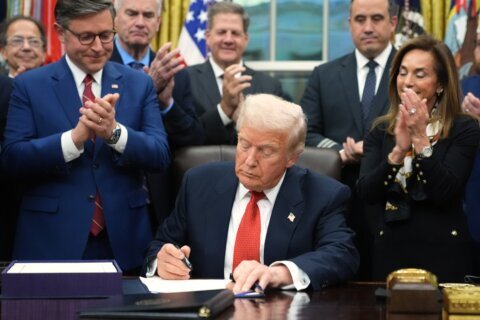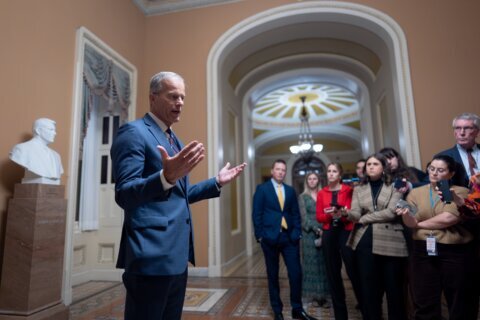School systems, teachers, students and their parents have had to adapt to virtual classrooms at an unprecedented pace because of the coronavirus pandemic.
The changes can be challenging, even for students who are well-equipped with laptops and high-speed internet. But thousands of students don’t have a computer, much less an internet connection.
This digital divide was an issue well before the spread of the new coronavirus. And Sen. Chris Van Hollen, who has proposed legislation aimed at reducing the “homework gap” and the lack of broadband access for many families, said the current situation only underscores the need to address the issue.
During a digital roundtable Tuesday with key educators and others from across Maryland, Van Hollen said COVID-19 has cast a “stark light” on the challenge of making distance learning accessible to all schoolchildren.
“It’s not just a homework challenge,” said the Maryland Democrat. “This challenge is even greater than it was before.”
- Sign up for news alerts from WTOP
- National Spelling Bee canceled for first time since 1945
- WTOP coronavirus poll: Stimulus checks helping, hope comes from perspective
- Coronavirus diary: Under quarantine at home and delivering the news
- Where to get tested for COVID-19 in the DC region
- Trump targets Hogan in attempt to flip testing criticism back on governors
- Schumer: Deal reached on major parts of $500B virus aid
Among the other participants was Prince George’s County Public Schools CEO Monica Goldson. In the past four weeks, she said, the school system has distributed 65,000 Chromebooks to students. Free Wi-Fi hot spots have also been set up with antennae at more than 70 schools.
“People can literally pull up into the parking lot and utilize free Wi-Fi,” she said.
Goldson added that 5,000 hot spots have been purchased through Verizon, and the school system is also working with Comcast to get students connected. In addition, the Prince George’s County School Board has approved $2 million to address the need for more internet accessibility.
Baltimore City Schools CEO Sonja Santelises said her school system has been dealing with many of the issues that Prince George’s County has.
The school system purchased more than 12,000 Chromebooks immediately after it became clear that COVID-19 was going to disrupt the normal school year, Santelises said. Those were added to the 27,000 Chromebooks and portable devices that the school system already had in classrooms.
But the pandemic has presented hard-to-anticipate logistical issues. For instance, Santelises said, there were nowhere near enough power cords for the devices. As a result, she said, close to 15,000 power cords had to be ordered.
“So, even details like power cords were things that in this crisis became very evident to us,” Santelises said.
Research indicates that though 7 in 10 teachers assign homework that requires internet access, 1 in 3 households don’t have access to the web, said Jessica Rosenworcel, a commissioner with the Federal Communications Commission.
“It’s no longer the case that paper and a pencil is good enough to get your homework done,” she said. “Kids need internet access. And we knew it before this crisis, but it is becoming painfully clear now that not every child is connected.”
Legislation recently passed by Congress includes $207 million that Maryland localities can use to address various expenses related to the pandemic, Van Hollen said, including distance learning and narrowing the digital divide.








